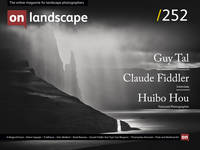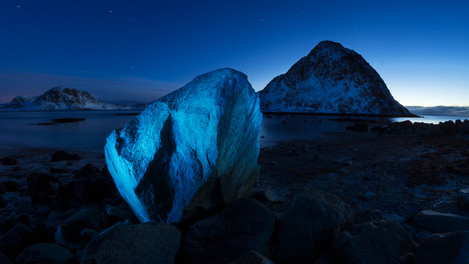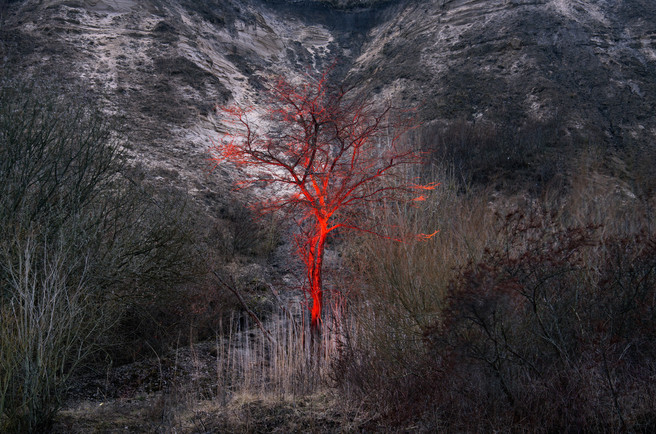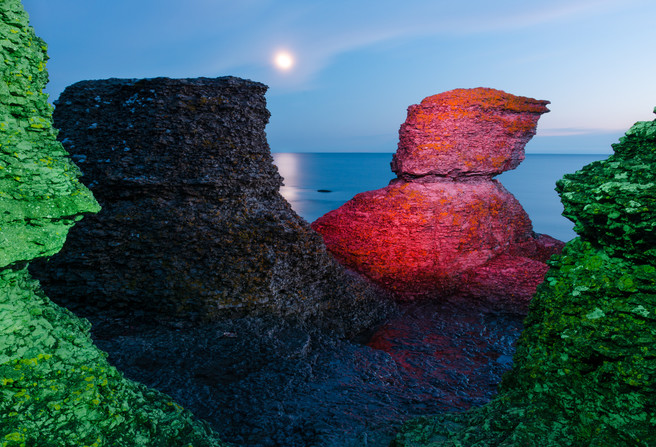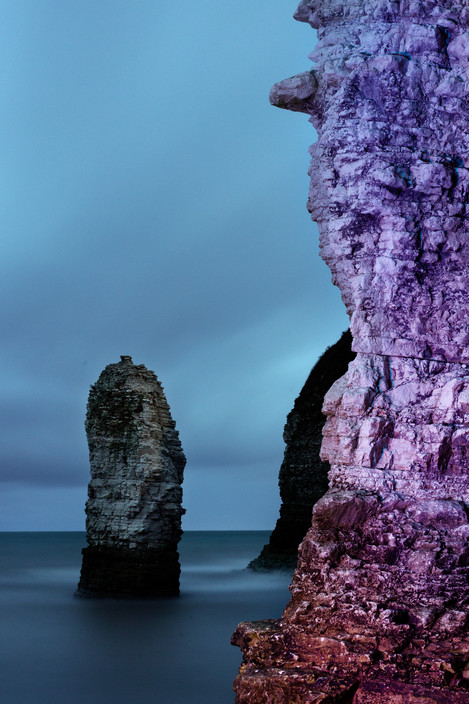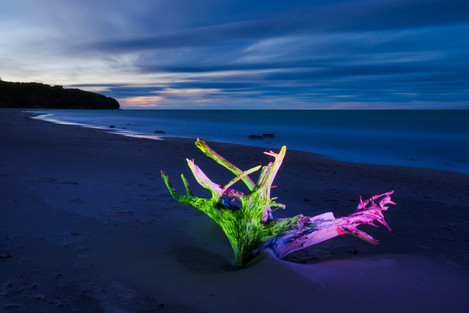Mystical Motifs from Stained Glass

Przemyslaw Ziemacki
Przemyslaw Ziemacki is a nature photographer and journalist from Klodzko, Poland. He takes landscape as well as wildlife and details photographs. He works mainly in his home area but also has traveled around Europe, especially to take photographs around the Baltic Sea. Three of his photography projects – “Night”, “Seagulls at twilight” and “Quanta of rose and snow” – incorporate artificial light in nature photography.
Using artificial light when it's dark lets photographers colour the landscape. This way, nature photography can be more open to the artists’ imagination and may give intriguing aesthetics.
One of the consequences of the lack of sunlight at night is that photographers focus their attention on the sky. Often when we hear about night photography of nature's landscape, we assume that it is some pictures in which the Moon or stars’ formations play the main role. So the landscape becomes a background or a kind of a frame for the sky. By using artificial light the situation changes 180 degrees. It is how architecture photography works after getting dark while many buildings are lit with street lamps or even dedicated spotlights. Preparing such lighting conditions in nature is probably not a good idea but incorporating smaller kinds of lighting equipment seems to be promising.
However, the above conclusion is only post rationalisation. To start the project called “Night”, I walked a path of fascination, inspiration and coincidence. I believe my fascination with the night came from two sources, both much older than my photography. The first one was animals’ activity from dusk to dawn so the reason connected directly with an interest in nature.
The second one was rather cultural as in the 90. I watched the “Twin Peaks” and “X files” series as well, as I was interested in cold war secret aircraft. So the night was a territory in my mind where spirituality, new technologies and wildlife met together. During my studies, I got SLR and DSLR cameras and I was looking around at famous photographers’ works, both representing classical and unconventional approaches to nature photography.
The key idea is to not only light up objects in the landscape but also to do it with colour filters, in other words – to colourise them. It is a bit unusual in landscape photography to build dramaturgy of a photograph by controlling the light, shadow and colour because in most cases landscape photographers rely on found conditions. Right away I felt I found a technique I could engage in and make long term use of. The sources of light that I decided to use were not anything unusual in photography – firstly a flash and a bit later a torch. But choosing the colour filters was the coincidence in all this story. Very shortly after starting my photography, I was looking for an opportunity to exchange views. That was how I met Tomasz Pućkowski who was older and had more experience in landscape photography than me. But his main job was stained glass making.
Stained glass has roots in ancient times, but its glory days were definitely in the Middle Ages when overpainted coloured glass was turning churches into more mystical places. During the secession, stained glass became popular in homes and public buildings and nature motifs, especially plants, became common.
The first one is about what they are in my hand. The stained glass pieces, cut mostly from leftover glass and with no right angles, are far away from professional looking. Often the glass is not homogeneous. The pieces have different thicknesses. Feeling them in my hand creates less of a high tech feeling, like having an old fashion wooden steering wheel aboard a modern yacht. The second one is about what aesthetic effect they give and how they influence on taking photographs. The stained glass absorbs a lot of light so to get something illuminated enough it is necessary to engage the flash several times. It is pretty difficult to overdose lighting and it is possible to set shooting parameters on feel. One does not need to count everything, just opening a snapshot and walking around flashing from time to time. I think the colourised glass gives more austere colours to my photographs as well.
As colours play the main role in the “Night” project the firmament full of stars is not so important, sometimes even a dark blue empty sky is preferable – it becomes a flat homogeneous surface, blue or purple. This is why quite many photographs have been taken at the end of blue hour. The first subjects are rocks and trees, especially skeletal, wind-shaped trees and deciduous trees without leaves. Often colours given to them are cultural related. Connecting blue and red on a single frame can be interpreted as the warmth of the fire and the cold of the night. This motif has engaged people since prehistory. In general, the night is full of similar contrasts. Darkness drives us to sharpen our senses. The world seems calm, although the approaching night is mysterious and fearful. Violet and aquamarine recall the mood of night – calm and mysterious. Lighting up leaves with a green filter strengthens their natural colour taking them to a higher level of intensity. Also having both artificial and natural lighted green objects on the same frame delivers interesting variations within one colour range.
One green is fresh and intense while the other looks soft and calm. A photograph from the “Night” project does not need to be night-looking. The idea could be to contrast a colourised object with very light, almost white, background. It is still night photography in an "after-sunset" meaning but the impression could be confusing as well as intriguing. Colourising natural objects in the night landscape also make us consider how other animals see their environment. It has been not my intention to try to imitate the sight of particular species but looking at the "Night” collection one can imagine a reflection of the natural world.

